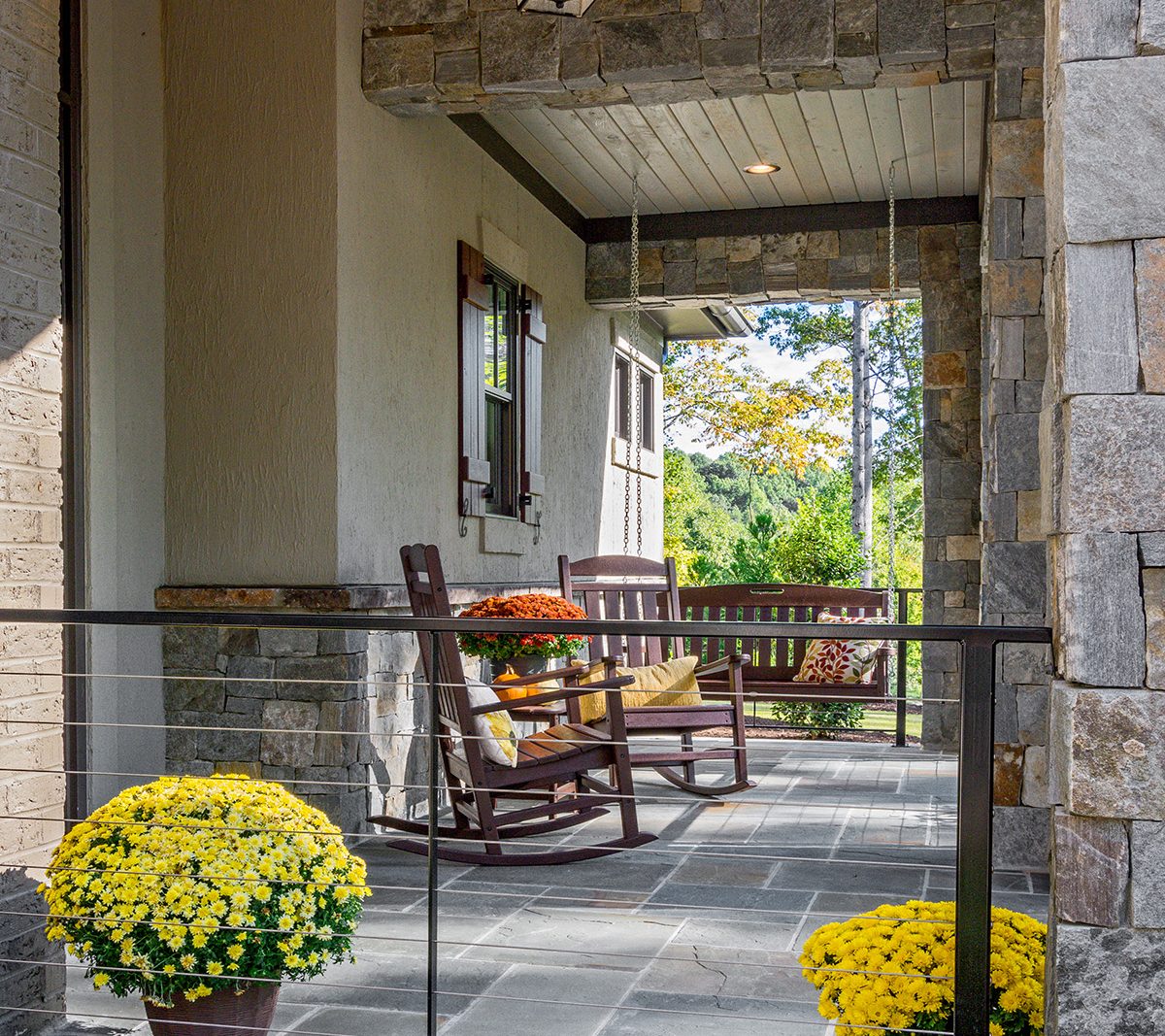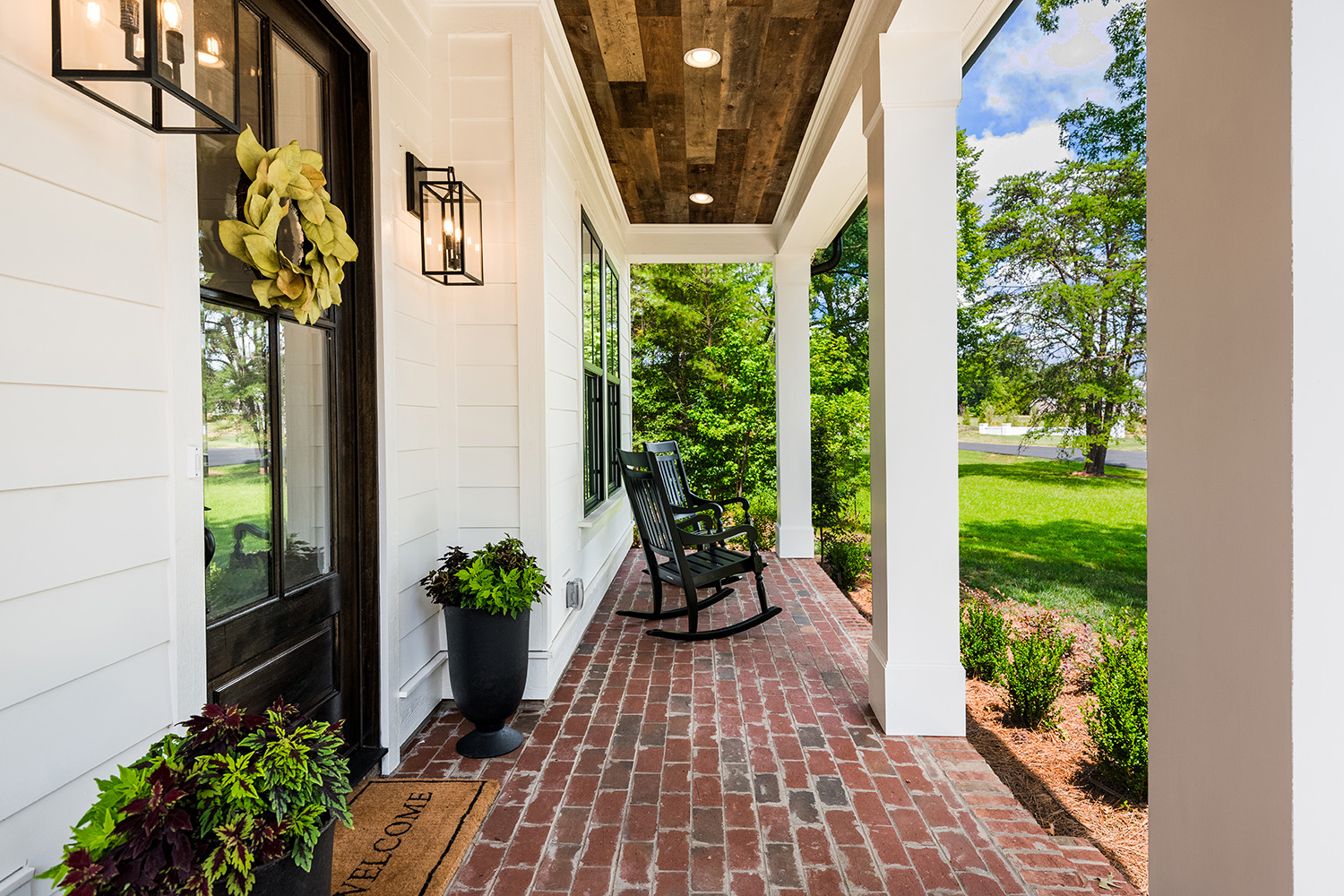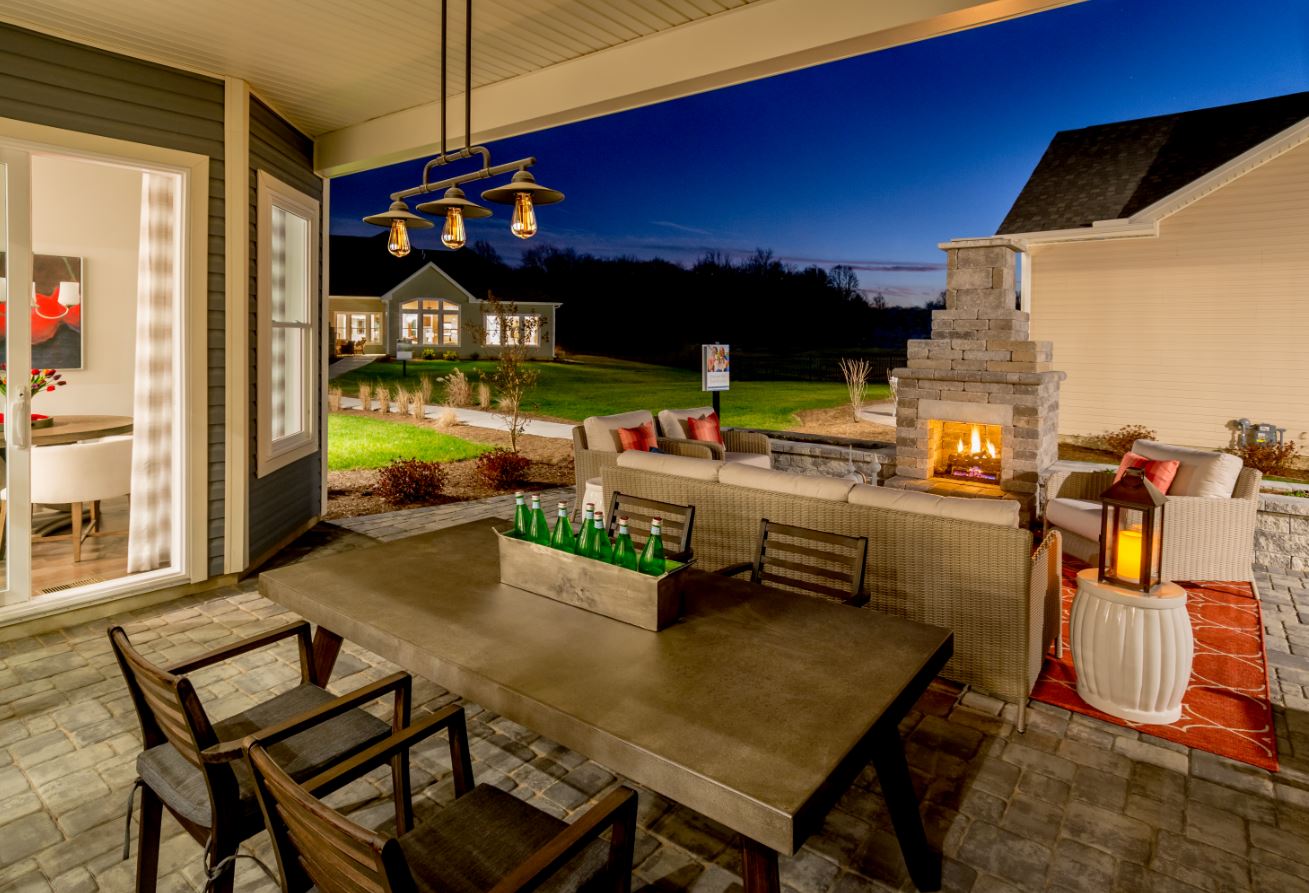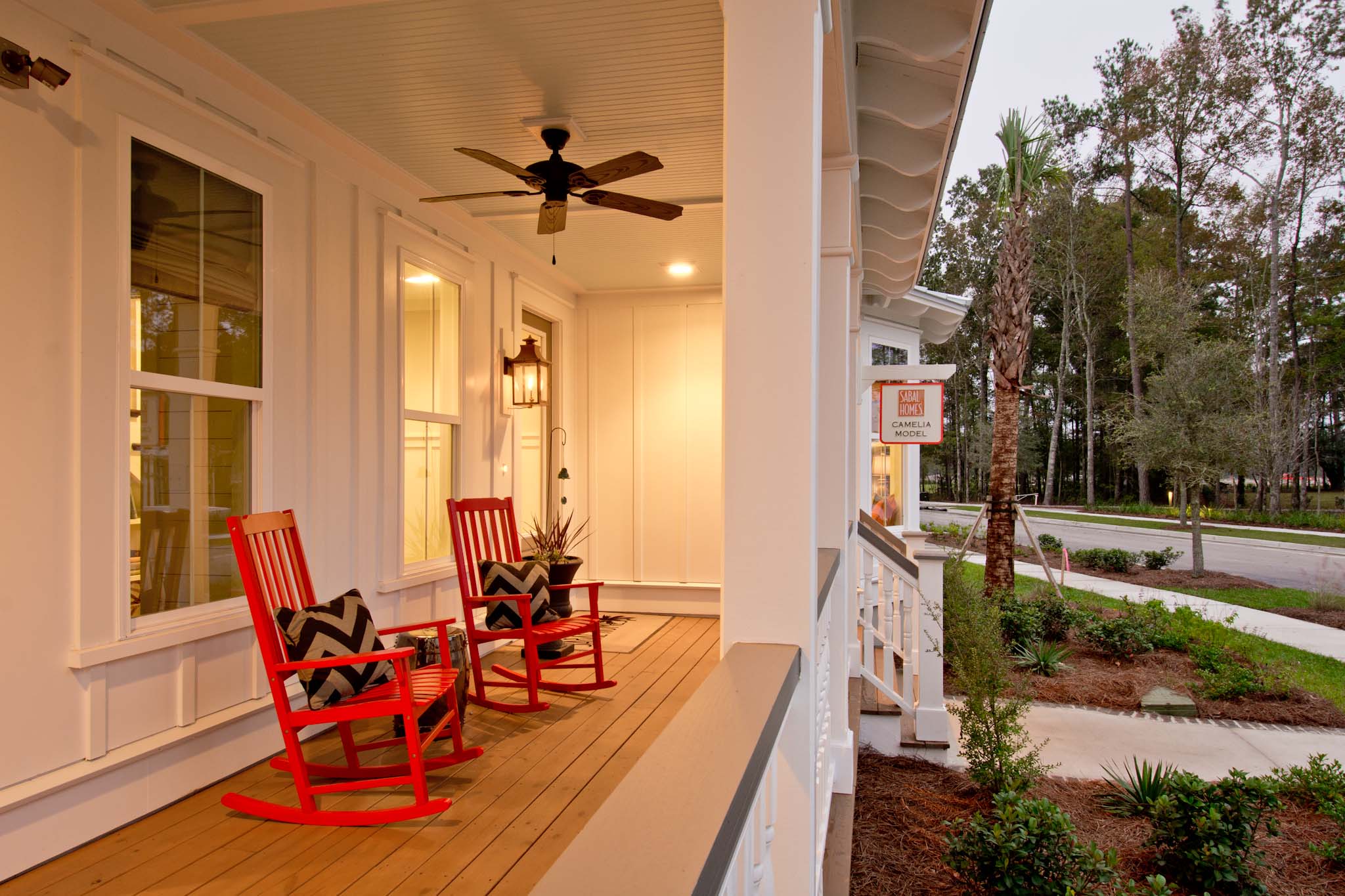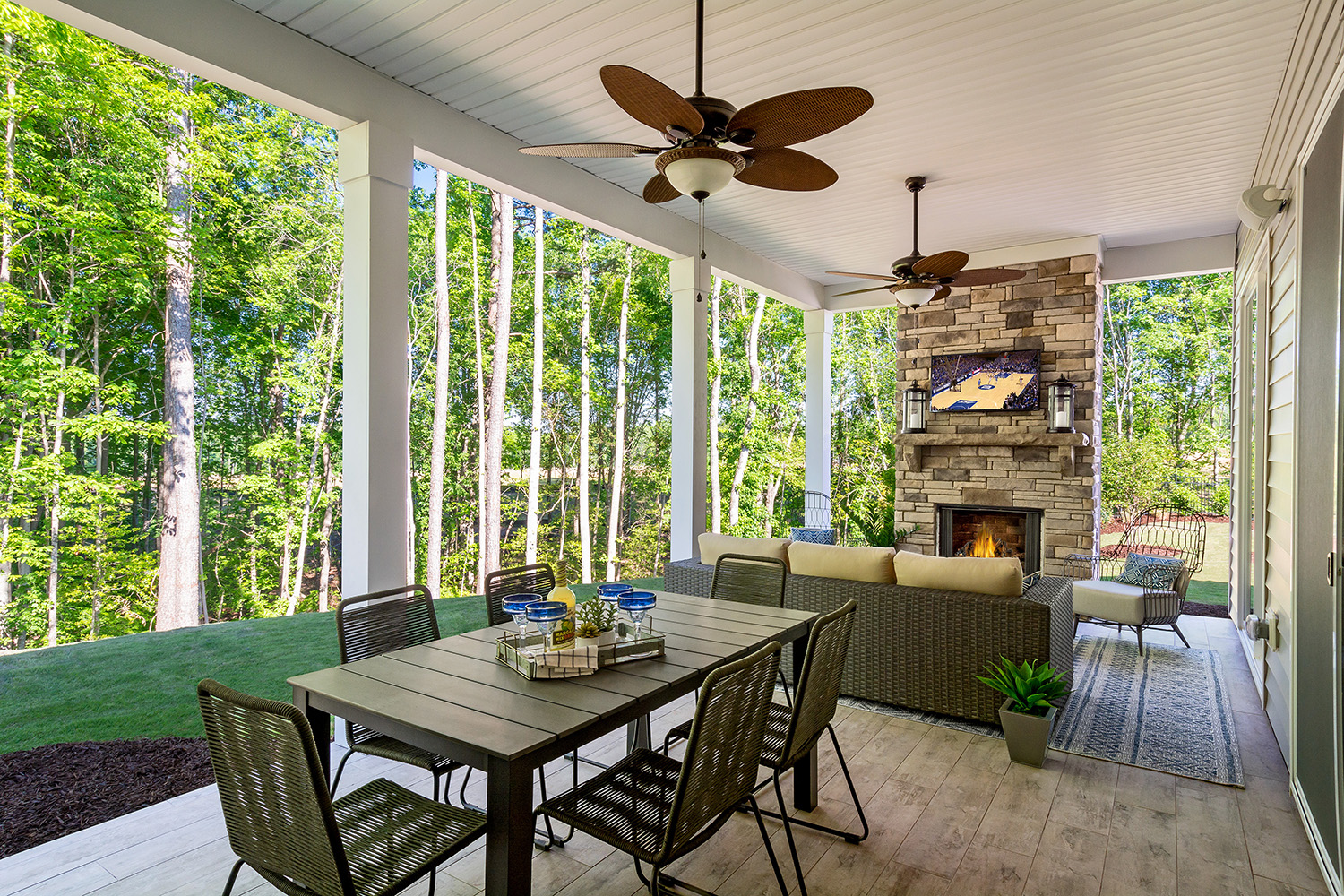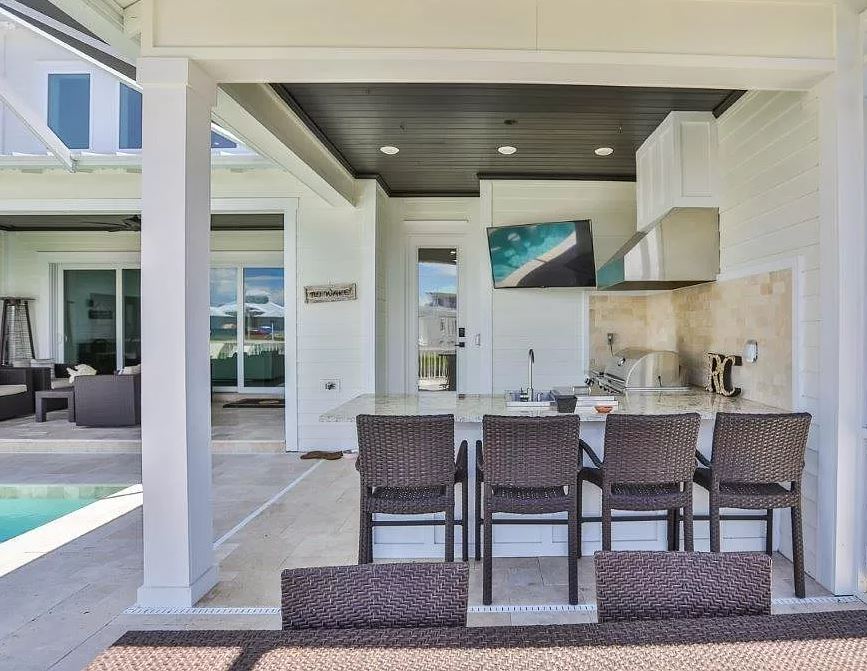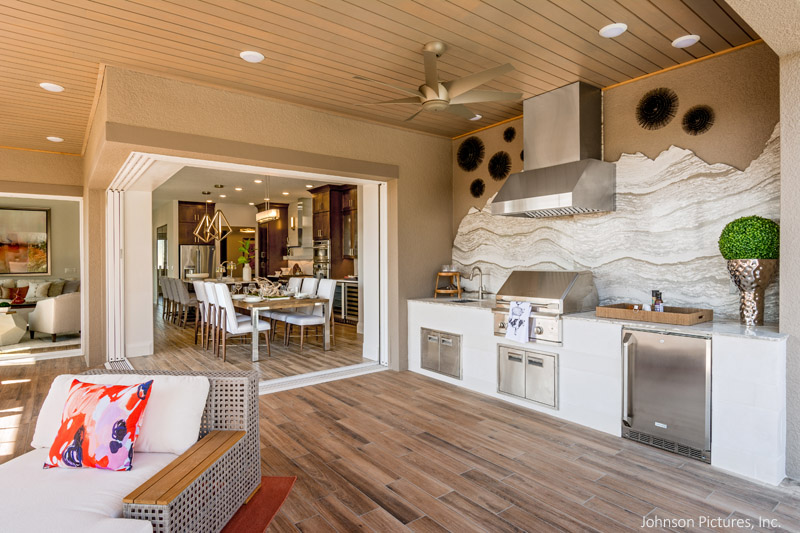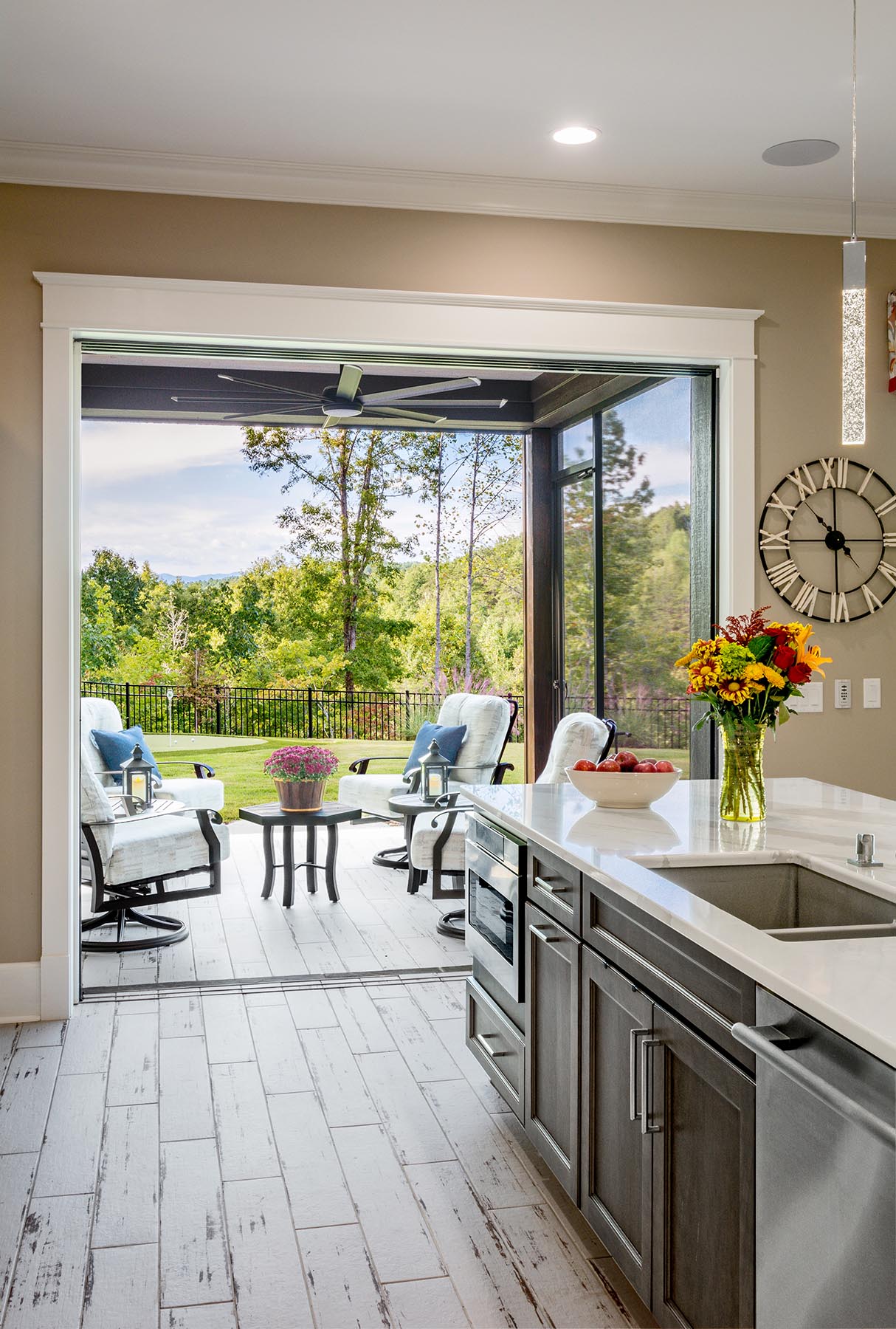It’s no secret that outdoor living is all the rage in housing. But how do you make each space a special place to spend time in? These are spaces that builders cannot afford to get wrong. So this week, I want to spend a brief moment to talk about basic dimensions and the overall feel of both front and back porch living.
The Front Porch
I just spent a magical evening in Charleston sitting on my son’s front porch with him and my husband. The afternoon was balmy, but we were in the shade and there was a lovely breeze. We enjoyed a glass of wine together in the evening followed by coffee there in the morning.
Hunter’s front porch is 8’ deep. As such, we were able to have four chairs facing each other for a social glass of wine. His porch is elevated from the street by 48” and is within conversational distance to the sidewalk at 12’. Because he lives in historic downtown Charleston, there was a lot of activity from joggers, dog walkers, babies in strollers – even a guy on a bike with a boom box in his backpack.
A front porch is a semi-public, outdoor living space. It needs to be deep enough to be usable, 6’ at a minimum but 8’ preferred. The relationship to the sidewalk is critical. The elevation adds a degree of separation without a visual barrier. A handrail helps to define the space. The distance from the sidewalk is also critical. If there was a garage, driveway and a 15’ utility easement between the front porch and the sidewalk, the activity of the street would be lost. During the pandemic and lockdown, this was the perfect spot to be socially distanced from your neighbor without wearing a mask.
Not far away from Charleston, we designed homes in Summerville that perfectly capture everything that makes a front porch magical. The square footage, finishes, lighting, and relationship to the sidewalk are exactly what home buyers yearn for.
The Back Porch
Unlike the on-display front porch, the back porch offers a more private experience. A place wear you can enjoy your morning coffee still in your P. J’s. The trend has been for this private outdoor living to grow into three distance functions: lounging, cooking and dining. Back porches tend to be deeper – 10’ to 12’ or more.
Hidden away from the activity on the street to watch, we can add TV’s and fireplaces to back porches. The cooking is actually grilling and that can happen on the back porch or beyond in the backyard. Designers need to mindful of the heat and smoke that comes with grilling making the backyard a nice alternative when space is limited – except of course when it rains.
The next awesome trend is opening up the interior of the home to the back porch including disappearing stacking sliding glass door to accordion doors. In climates that aren’t California, this usually requires the porch to be screened so the house and porch don’t fill with flies and mosquitos. I wouldn’t advise completely opening up your house to your front porch. I’d also caution against grilling on the front porch unless you bought enough food for hungry neighbors passing by – otherwise that’s just cruel!
Porches are not a new concept, but they have become big selling points in a hot market. When designing them, it’s important to consider how these spaces will be used. Think beyond the seldom-used lanai and consider how to make each space memorable.
Are you finding your buyers opting for the larger outdoor living space/upgraded outdoor kitchen? Now that spring is finally upon us, are you putting more emphasis on outdoor living? I’d love to hear your thoughts!
Categorized in: Outdoor Living, Trends in Design
This post was written by Housing Design Matters


